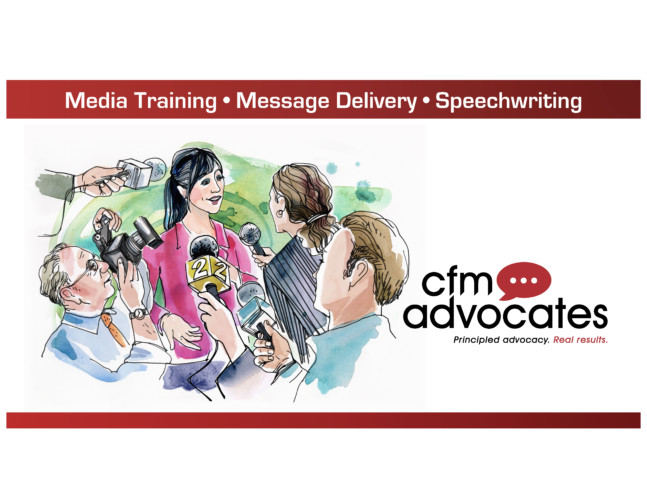
Press releases are more authentic and relatable if they center on a good story told well. Storytelling humanizes PR. It’s no secret people like stories about other people because they attract attention and create bonds, which is pretty much the objective of public relations.
Converting press releases into storytelling requires curiosity, legwork and creativity. Emotional intelligence helps, too. The biggest obstacle to reimagining PR as storytelling is not laziness, just a lack of will. Business leaders and their marketers believe their job is selling products, not telling stories. They ignore the power of human interest and what it can generate.
Good stories don’t just land in your lap. You have to look and listen for them. That’s a good reason to talk with customers about their problems and delights, what makes them happy and what challenges them. You can discover how your product is a difference-maker for your customers – or why it isn’t. Customer conversations can become product revelations and storytelling safaris.
By talking with customers, you can discover how your product is a difference-maker for your customers – or why it isn’t. Customer conversations can become product revelations and storytelling safaris.
What you see and hear can translate into stories about your customers and their interaction with your products, providing the realistic raw material of effective PR. Your customers may be the stars that animate your story-form PR.
Just telling any story isn’t enough for successful PR. The story must be relatable and relevant to your business. Stories also must have character and authenticity so they are believable and not dismissed out of hand as a marketing ploy. You want your stories to be memorable and associated with your value proposition.
Once upon a time, these tactics might have been considered out of the box. Now, they are essential to earn customer attention and affinity in a blizzard of competing outreach and information. Storytelling is no longer the exception to the rule for PR and advertising.
Stories have a storied history. Their origin is in cave drawings and a person talking to other people listening. A great story to capture on video, digital images and text is a speech, aided by a visually arresting PowerPoint presentation that underscores key points. This approach to storytelling doesn’t require a Hollywood producer. It does require creating a story, conceiving how best to tell it and getting the help you need to convey it.
Storytelling PR output can take many forms, including videos, Instagram posts or brand journalism. You may uncover a story that is a perfect vehicle for newsjacking a trending topic.
Video Content
Video PR content in a digital world is shareable gold. Good video content can tell a story that connects with a target audience through its structure, people, situations and solution. It should be informative, charming and fun, widening the appeal to employees and people who simply admire good stories. Video content is immersive, easy for viewers to access and great for boosting online search. Video requires an investment and people who know what they are doing, but the durability and shareability of the content makes the investment worthwhile.
Instagram Storytelling
Storytelling on Instagram is a step beyond snapping and sharing a picture. Influencers influence by sharing personal stories about brands and products on the platform. You can celebrate milestones or awards by telling their backstory. Another effective Instagram technique is sharing a gallery of images of a new product introduction or store opening. Depending on the product, you can repeat the outreach on Pinterest.
Brand journalism
Brand journalism involves adopting a reportorial approach to a story. Instead of writing ad copy, you write a story in a journalistic style and place it in a magazine, newspaper or digital site side-by-side with actual journalism. The story will be tagged as paid content, but its familiar style and featured subject matter will attract viewers, including those who recognize it as paid content. The key is writing useful, practical, honest and engaging content.
To prepare yourself as a storyteller, review some successful examples that show off effective approaches to storytelling PR:
Burt’s Bees frequently features videos of founder Burt Shavitz, a former beekeeper who shares his philosophy and insight in quirky videos and along the way builds trust with the brand he created.
Skype tells stories about how families, friends and colleagues stay connected using the chat app. Their content has included specific examples, including a Ugandan man who stayed in touch with his family after fleeing from war and persecution. The emotive 2014 PR campaign attracted substantial earned media and didn’t require paid media. Facebook has taken a similar approach this year in marketing its Portal TV.
Airbnb uses impressive statistics to tell a story about its rentable spaces. For example, one of its videos illustrated how 1 million people in 17,500 cities in 150 countries spent New Year’s Eve in an Airbnb rental.
Disney promoted its Paris theme park with a short animation featuring a duckling that becomes entranced with a Donald Duck comic book. The comic book is lost in a torrential rainstorm, but the duckling and his family eventually go to Disneyland Paris where there is a bill-to-bill meeting with the Mr. Duck. Viewers can’t escape the story’s message that Disneyland captivates young people.
Apple created a short film that told the story of a young child losing his tricycle through the lens of an iPhone. The heartwarming film demonstrated how the iPhone camera worked underwater as well as its time-lapse and slow motion capabilities, stoking a desire to own one in every parent and grandparent.




